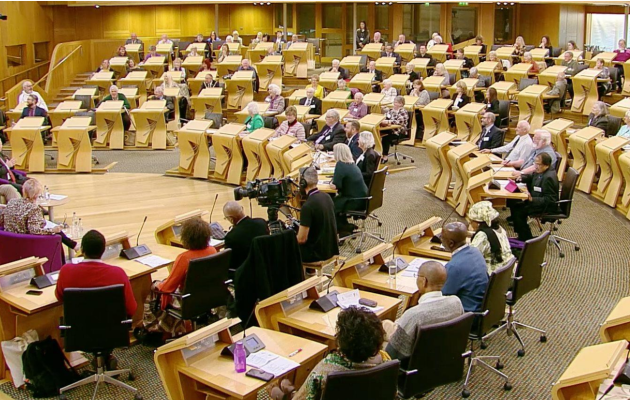Barbara Grieve, our Research and Finance Officer, has been researching a few case studies across rural and island Scotland. Here she looks at community wealth building and what it looks like in the Outer Hebrides.
Over the last forty years, Uist, an archipelago of 7 inhabited islands in the Outer Hebrides, has seen a steady increase in the number of social enterprises being set up and now boasts the highest concentration in Scotland. These community-based, not-for-profit organisations epitomise community wealth building. Usually set up to address social, communal or environmental issues, any profits are fed back into the community. They help to develop people’s skills, create local job opportunities and increase the connectedness within the community as people work towards a common goal. Theona Morrison and Thomas Fisher, two of the founders of a Uist-based social enterprise CoDel, are not surprised by the high number. 'Social’, or, as Thomas prefers, ‘community’ enterprise is not a new concept on the islands. Rather, it is a more formalised approach to the long tradition of islanders working together to survive.
Cothrom is a community learning and development organisation that was set up in the early 1990s to help women return to work following having children. Cothrom Òg is the organisation’s Gaelic speaking nursery, offering year-round provision - significantly more than the statutory minimum - for working parents and those seeking employment. This Gaelic nursery not only provides a support system for parents and carers to return to normal life, but it means that the children themselves are connecting with their heritage from a very young age. As Cothrom has grown, it has expanded its services in line with the needs of the community. It now provides nationally recognised training courses that enable people to stay on the islands and study, therefore retaining more young people than in previous generations.
Tagsa Uibhist is another social enterprise set up by local people with local interests in mind. It offers services that seek to combat loneliness and isolation, ensuring that the elderly in Uist remain connected and seen within their community. One of the projects they run is a community garden that is addressing social and environmental issues. People are taught sustainability through learning to grow and cook produce, how to compost and how to recycle. This organisation creates unique and important opportunities for inter-generational socialising, learning together and from one another which itself strengthens community cohesion and resilience, and is proven to improve mental health.
These are but two examples of more than fifty social enterprises, and over 200 micro enterprises, which cover a gamut of activities and interests, all drawing on the huge wealth of community practices to meet specific needs within the community.
Third sector organisations, like Cothrom and Tagsa Uibhist, are often used by local authorities to fulfil their statutory obligations and, when sufficiently resourced, are best placed to do this. They can offer a more personalised, relevant service. Using homecare as an example, service users are less likely to be viewed just as service users if care workers are employed from the local area. On Uist, they share a cultural heritage with the people they are caring for which keeps this person connected and ‘seen’ within the community.
These types of social enterprises emphasise that community-based enterprises are uniquely placed, and offer wonderful services and important integration for communities, but only if they are sufficiently resourced by the public sector. Audit Scotland recently reviewed the community response to Covid-19 and their series of recommendations on community empowerment reflect this need for sufficient resourcing:
- Recognise the value that the third sector and communities bring and trust those groups best placed to take the lead.
- More local decision-making structures with active local participation and shared power to allow decisions to be taken that matter locally.
- Understand the need to take risks and take a learning approach (see reference).
In summary, there needs a be a permanent shift in the public sector mindset to enable this type of collaborative approach. Policies need to change so that a partnership approach, with sufficient funding, to service delivery is the standard.




